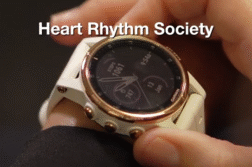NEW YORK, N.Y. (Ivanhoe Newswire) – Coronary bypass surgery is the most common heart surgery in the United States, with over 200,000 procedures done every year. The surgery improves blood flow to the heart by bypassing arteries clogged with plaque. Now, surgeons are performing this procedure in a specialized way and for many patients, that means the heart keeps beating during the entire procedure. Beating Heart Surgery
For New York artist Yvelisse Boucher, putting brush to paper last year was cathartic and very personal. Boucher began painting safari-themed pictures after hearing wonderful news from her son and his fiancée that they were expecting. It also compelled the 61-year-old to make a life-altering decision.
“I have some work to do. I gotta be able to run around and chase this little guy,” she says.
Boucher was facing some serious health issues – she had Type 2 diabetes, a previously undetected stroke left her weak on one side, she had heart disease, and learned she needed a triple bypass.
“I was terrified. I was truly, truly terrified,” Boucher recalls.
Mount Sinai Morningside cardiovascular surgeon, John Puskas, MD recommended a highly-specialized surgery using arteries instead of veins and unlike other bypass procedures, surgeons didn’t stop the heart. Beating Heart Surgery
Dr. Puskas explains, “The no-aortic touch all arterial bypass operation does not use the heart lung machine at all. Instead of attaching arteries or veins to the aorta, we actually leave them with their own normal inflow.”
Dr. Puskas removed an artery from Boucher’s wrist to perform the bypass. Surgeons also surgically repositioned two internal arteries to improve blood flow. Dr. Puskas says the arterial graft and off-pump surgery leads to shorter recovery and better outcomes.
Boucher says she kept thinking about meeting her grandson, and that kept her going during recovery.
After recovery, Boucher finally met her grandson, Ezra.
“I did a little peek-a-boo thing with him, and he gave me my first smile and my heart just burst,” she exclaims.
Dr. Puskas says the arterial graft no-touch heart bypass is now the preferred way he and his Mount Sinai Morningside colleagues perform coronary bypass. Studies show there is a two percent stroke risk during traditional coronal bypass surgery. With the arterial graft no-touch technique, surgeons reduce the stroke risk to one-quarter of one percent.
Contributors to this news report include: Cyndy McGrath, Producer; Kirk Manson, Videographer; Roque Correa, Editor.
To receive a free weekly e-mail on medical breakthroughs from Ivanhoe, sign up at: http://www.ivanhoe.com/ftk
Sources:
John Puskas, MD, Chairman of Cardiac Surgery, Mount Sinai Morningside
MEDICAL BREAKTHROUGHS
RESEARCH SUMMARY
TOPIC: SAVING YVELISSE WITH BEATING HEART SURGERY
REPORT: MB #5172
BACKGROUND: The most common heart surgery in the United States is coronary bypass surgery. Over 200,000 surgeries take place every year. The surgery is designed to improve blood flow to the heart by clearing arteries that are clogged by plaque. A section of blood vessel from the legs, chest, or other body part are used to supply blood to the affected artery. During the surgery the sternum is separated, and the heart is stopped. Blood is sent using a heart-lung machinery. Most patients are admitted to the hospital the night before surgery, or in some cases the morning of the surgery. About 90 percent of people who undergo a bypass surgery encounter significant relief of their symptoms.
(Source:
DIAGNOSING: A doctor will often diagnose coronary artery disease from symptoms presented and testing. A doctor performs physical examinations and blood tests to help make the diagnosis. Exercise stress tests, a cardiac nuclear scan, and cardiac catheterization tells the severity of the condition and helps pinpoint which arteries are affected. These tests will help determine whether or not someone needs a bypass surgery. During bypass surgeries, blood is pumped from the heart to a machine and back into the body. Blood pressure, body temperature, and breathing are all regulated for the duration of the surgery.
(Source:
NEW TECHNOLOGY: There are now few centers across the world that are offering minimally invasive heart bypass surgery. These surgeries do not include major incisons or cutting into the breastbone. John D. Puskas, MD, Director of Surgical Coronary Revascularization, Mount Sinai Health System, has successfully completed two bypass surgeries through keyhole-sized incisions. Robotic instruments were used to create microincisions to access the affected artery. The new TECAB surgeries are best best for patients experiencing one to two blockages on the left side of the heart that want to avoid having a traditionally invasive surgery.
(Source:
https://health.mountsinai.org/blog/advanced-coronary-bypass-performed-at-mount-sinai-st-lukes/
FOR MORE INFORMATION ON THIS REPORT, PLEASE CONTACT:
Ilana Nikravesh
(347) 852-3382
Ilana.nikravesh@mountsinai.org
If this story or any other Ivanhoe story has impacted your life or prompted you or someone you know to seek or change treatments, please let us know by contacting Marjorie Bekaert Thomas at mthomas@ivanhoe.com




